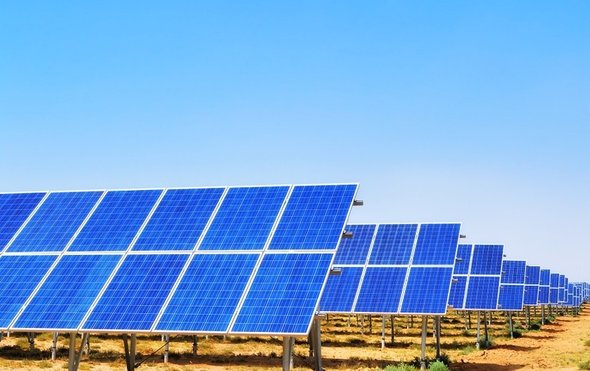(单词翻译:单击)
听力文本
This is Scientific American — 60-Second Science. I'm Christopher Intagliata.
Solar companies are obviously in the business of building solar energy farms. But here's another way the solar developers are spending their money: to protect and relocate desert tortoises from their sunny desert solar farms—to the tune of at least 60 million dollars.
"It's an incredible amount of money to do something that is not necessary." Not necessary to the generation of solar energy, that is, says Rebecca Hernandez. Because why not just put your panels elsewhere?
Hernandez, an earth system scientist and ecologist at U.C. Davis, says the alternatives to developing on wild lands are many: put photovoltaic panels over rooftops or parking lots; atop salty or contaminated land, unsuitable for farming; or why not install floatovoltaics? "A floatovoltaic is a photovoltaic installation that is placed on pontoons that float on the water."

She and her colleagues identified one and a half million football fields' worth of surface area on those types of alternative sites in California's Central Valley alone. With a combined energy generation potential of 4,300 terawatt-hours per year using the solar panels available on the market today, that's enough to power the entire United States.
"This paper isn't to say that we think that all energy should be derived from solar energy. Obviously a diverse portfolio of energy sources helps to provide resilience to our energy systems. But really our study demonstrates that we have a lot of untapped potential out there."
The report is in the journal Environmental Science and Technology.
Now cases do exist where it might be too expensive, or too technically complicated to develop on these alternative sites. But if developers take a cue from Hernandez, perhaps the future of solar will be truly sustainable.
Thanks for listening for Scientific American — 60-Second Science. I'm Christopher Intagliata.
参考译文
这里是科学美国人——60秒科学。我是克里斯托弗·因塔利亚塔。
太阳能公司的工作当然是建立太阳能发电厂。但是太阳能开发商正在另一项工程上投资:保护沙漠陆龟,并将其从阳光充足的沙漠太阳能发电厂中迁移出去,这项工程至少要花费6000万美元。
“这是花费巨额资金来做不必要的事情。”丽贝卡·赫尔南德斯认为,这对于产生太阳能来说没有必要。为什么不把太阳能板放到其他地方呢?
赫尔南德斯是加州大学戴维斯分校的地球系统科学家和生态学家,她表示,替代荒地开发的方案有很多:可以把光伏板放在屋顶或停车场;也可以放在不适合耕种的盐碱地或被污染的土地上;又或者,为什么不使用浮动太阳能技术呢?“浮动太阳能技术是将光伏装置安装在漂浮在水上的浮筒上。”
仅在加州中央谷的这类可选择地点中,赫尔南德斯和同事就找到了相当于150万个足球场表面积大小的地方。使用目前市场上现有的太阳能板,这些地方每年的发电潜力为4300太瓦时的电力,足以为整个美国供电。
“这篇文章并不是说我们认为所有电能都应该从太阳能获得。显然,多样化的能源组合有助于为我们的能源系统提供弹性。而我们的研究表明,有很多尚未开发的潜力。
这项研究结果发表在《环境科学与技术》期刊上。
确实存在的问题是,要么由于价格过于昂贵,要么由于技术过于复杂,导致无法在这些可选择地点进行开发。但是如果开发者从赫尔南德斯那里得到启发,或许太阳能的未来真的可以实现可持续发展。
谢谢大家收听科学美国人——60秒科学。我是克里斯托弗·因塔利亚塔。
译文为可可英语翻译,未经授权请勿转载!
重点讲解
重点讲解:
1. at least (数量)至少,不少于;
例句:Officials did not release exact figures for the contract but the project is estimated to be worth at least five-point-three billion dollars.
有关官员没有公布协议的具体数字,但是估计这一项目价值至少53亿美元。
2. why not (表示建议)为什么(不);
例句:Why not give Claire a call?
为什么不给克莱尔打个电话?
3. derive from (使)起源于;(使)来自;
例句:Anna's strength is derived from her parents and her sisters.
安娜的坚强源自于她的父母和姐姐们。
4. help to do sth. 帮助;帮忙;
例句:He has helped to raise a lot of money.
他帮着筹集了很多钱。


